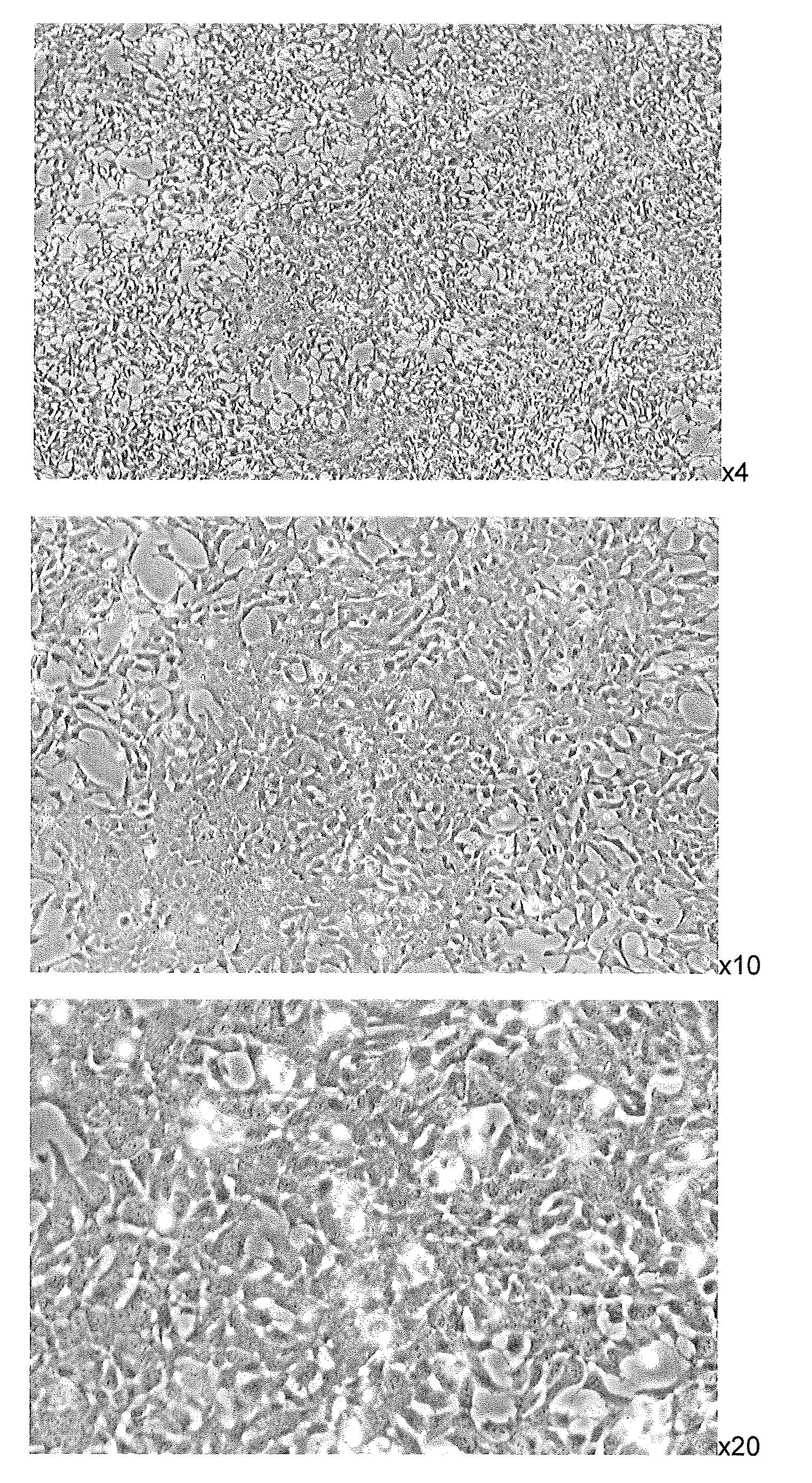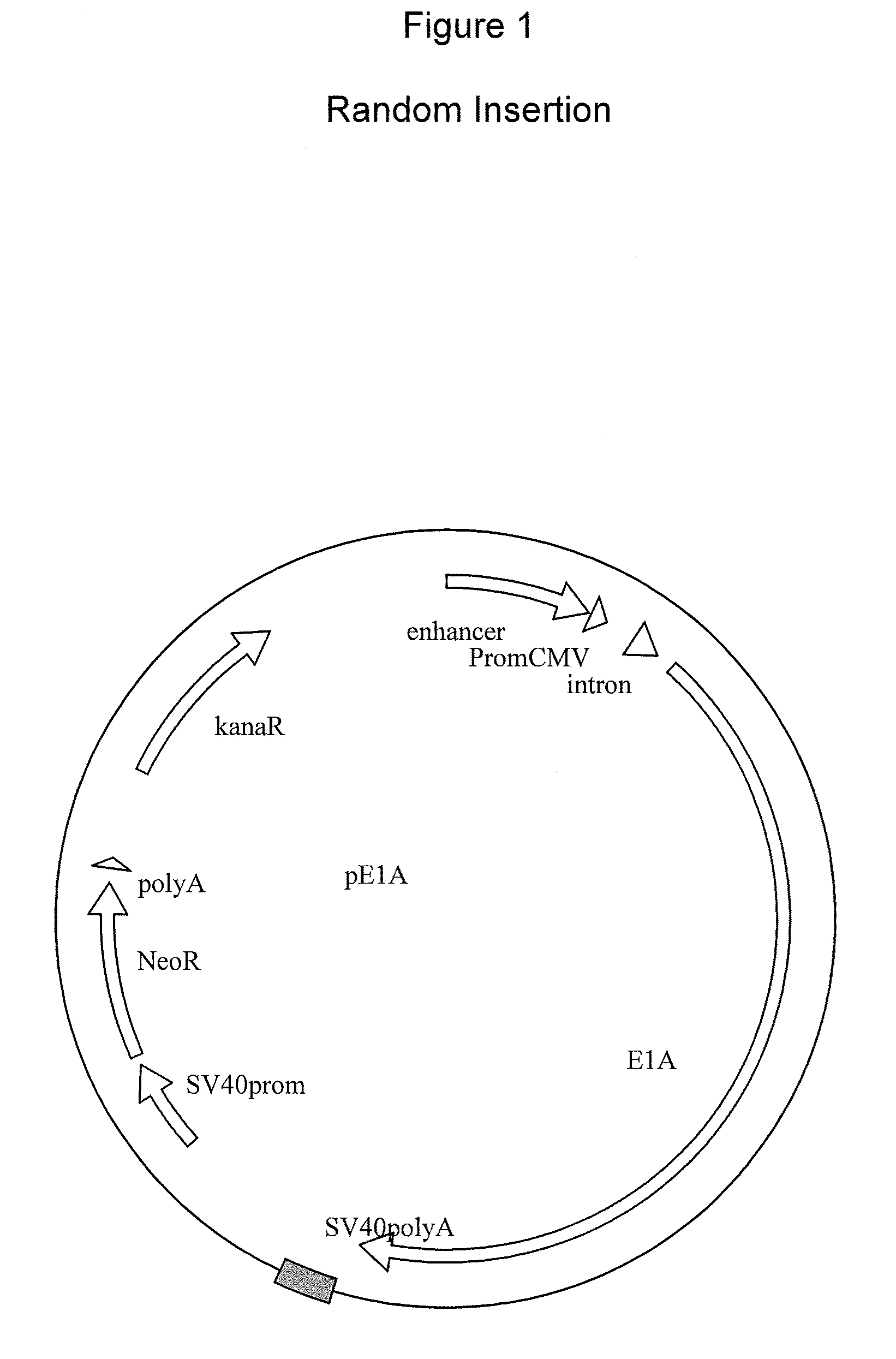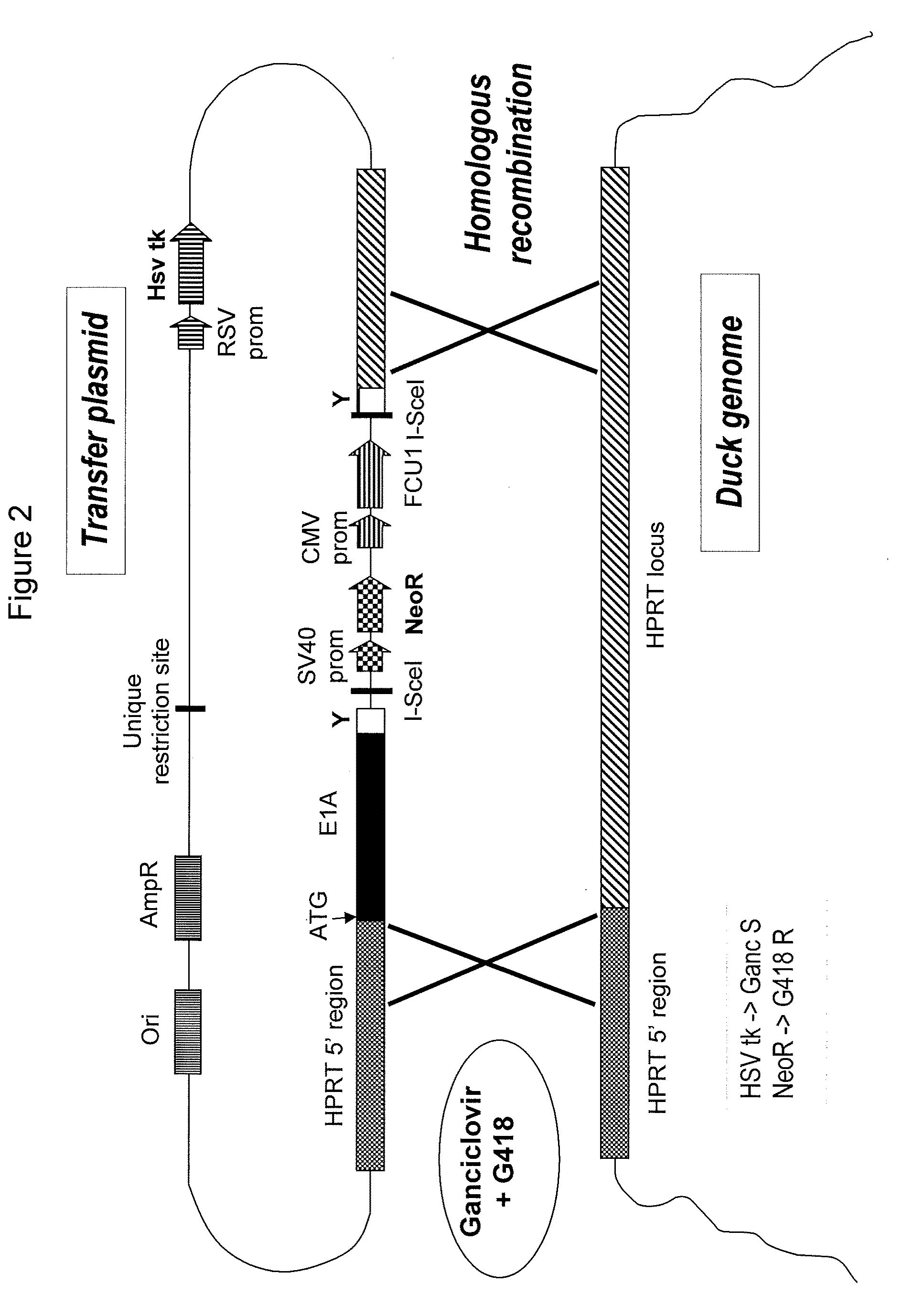Immortalized Avian Cell Lines
a technology of avian cells and cells, applied in the field of immortalized avian cells, can solve the problems of increasing the complexity of glycosylation proteins, affecting the effect of avian cell immortalization, and currently linked to various difficulties in cef use, so as to achieve efficient immortalization
- Summary
- Abstract
- Description
- Claims
- Application Information
AI Technical Summary
Benefits of technology
Problems solved by technology
Method used
Image
Examples
example 1
Establishment of an Immortalized Avian Cell Line Comprising an E1A Nucleic Acid Sequence
A. Plasmid Constructs
[0148]A-1. Plasmid Constructs for Random Insertion.
[0149]A plasmid sharing no specific sequence of homology with the Cairina moschata genome (plasmid E1A) has been used for this purpose (FIG. 1).
[0150]A-2. Plasmid Constructs for Targeted Insertion.
[0151]A plasmid comprising two 5 kb fragments homologous to the Cairina moschata HPRT gene surrounding the E1A nucleic acid sequence (SEQ ID No:1) and two selection markers has been constructed. The HPRT gene encoding for the hypoxanthine guanine phosphoryl transferase has been selected as an adequate site for the constitutive expression of the E1A nucleic acid sequence.
[0152]These two selection marker are the FCU1 gene (Erbs et al. Cancer Res. 2000. 15. 60:3813-22) under the control of a CMV promoter (Thomsen et al. P.N.A.S. 1984. 81. 3:659-63) and the Neomycin (or Puromycin) resistance gene placed under the control of a SV40 promo...
example 2
Establishment of an Immortalized Avian Cell Line Comprising an E1A Nucleic Acid Sequence and a Recombinant Telomerase Reverse Transcriptase Nucleic Acid Sequence
A. Plasmid Constructs
[0181]A-1. Plasmid Constructs for Random Insertion.
[0182]A plasmid sharing no specific sequence of homology with the Cairina moschata genome has been used for this purpose.
[0183]A-2. Plasmid Constructs for Targeted Insertion.
[0184]A plasmid (plasmid dTERT-E1A) comprising two 5 kb fragments homologous to the Cairina moschata HPRT gene surrounding the Cairina moschata telomerase reverse transcriptase gene (SEQ ID NO:3), the E1A nucleic acid sequence (SEQ ID NO:1) and two selection markers has been constructed. The HPRT gene encoding for the hypoxanthine guanine phosphoryl transferase has been selected as an adequate site for the constitutive expression of the E1A nucleic acid sequence.
[0185]These two selection marker are the FCU1 gene (Erbs et al. Cancer Res. 2000. 15. 60:3813-22) under the control of a CM...
example 3
ECACC 09070701, ECACC 09070702, and ECACC 09070703 Immortalized Cairina moschata Cell Lines
[0199]The Cairina moschata cell lines ECACC 09070701 (T17-17703B), ECACC 09070702 (T17-17703B2), and ECACC 09070703 (T17-17703A) were obtained from primary embryonic Cairina moschata cells as described in Example 2 by target insertion (electroporation) with the plasmid dTERT-E1A.
[0200]The cells lines arose between 210 and 260 days post-transfection, after a senescence / crisis phase, as the subpopulations ECACC 09070701, ECACC 09070702, and ECACC 09070703 entered a new continuous exponential growth phase. Corresponding growth curves (FIG. 8) show the populations' evolution until 456 days post-transfection. The numbers of population doublings (PDL) calculated for this period (ECACC 09070703: 138 PDL; ECACC 09070701: 131 PDL; ECACC 09070702: 166 PDL) are far beyond the Hayflick limit. The Cairina moschata cell lines ECACC 09070701 (T17-17703B), ECACC 09070702 (T17-17703B2), and ECACC 09070703 (T17...
PUM
 Login to View More
Login to View More Abstract
Description
Claims
Application Information
 Login to View More
Login to View More - R&D
- Intellectual Property
- Life Sciences
- Materials
- Tech Scout
- Unparalleled Data Quality
- Higher Quality Content
- 60% Fewer Hallucinations
Browse by: Latest US Patents, China's latest patents, Technical Efficacy Thesaurus, Application Domain, Technology Topic, Popular Technical Reports.
© 2025 PatSnap. All rights reserved.Legal|Privacy policy|Modern Slavery Act Transparency Statement|Sitemap|About US| Contact US: help@patsnap.com



